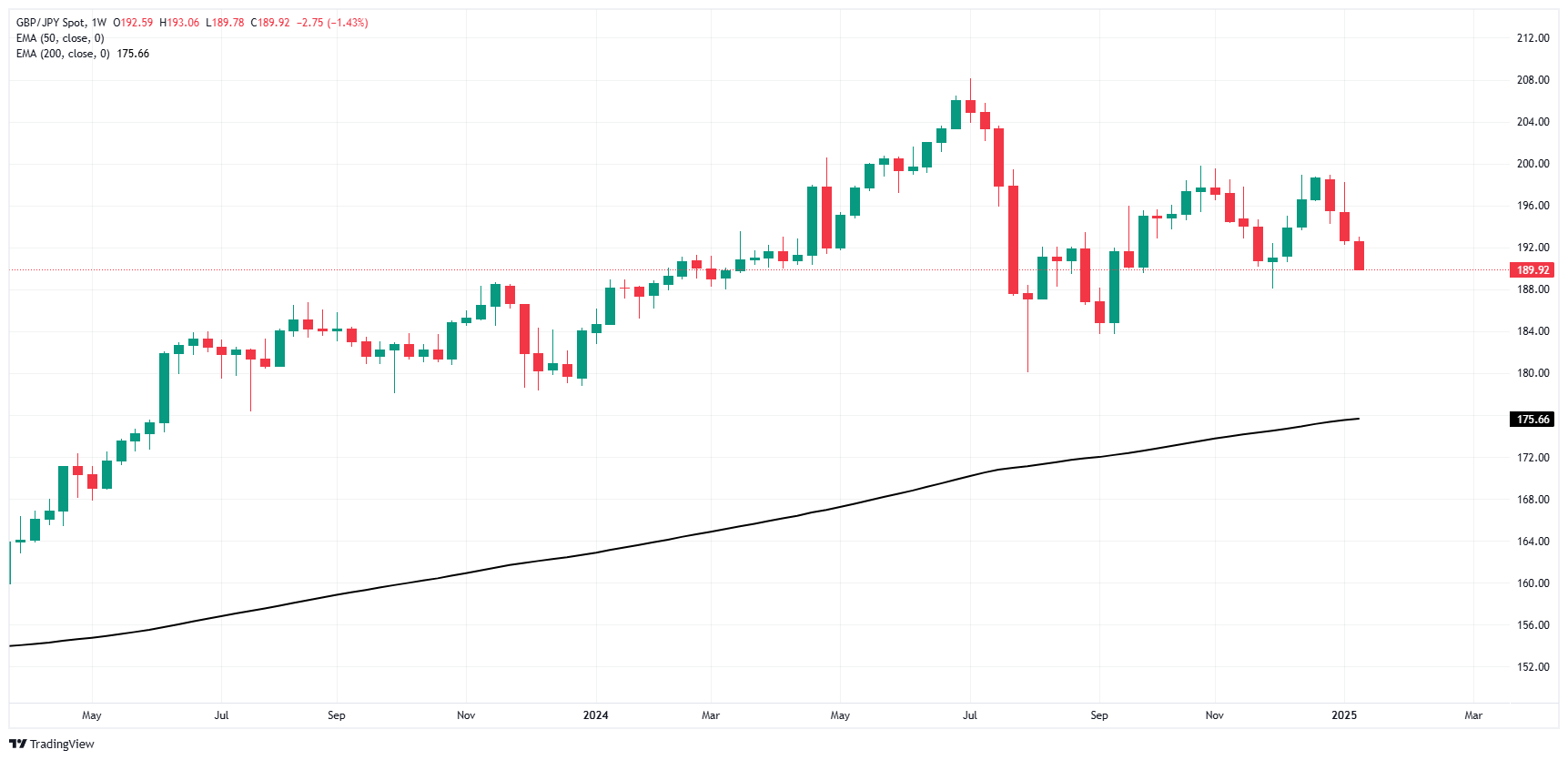GBP/JPY pumps the brakes, extends into a two day backslide
- GBP/JPY explored the downside on Tuesday as GBP faith withers.
- The Pound Sterling lost market support after UK growth figures missed the mark.
- UK Retail Sales are due on Friday, lofty forecasts might set Guppy up for failure.
GBP/JPY pivoted back into the low end on Tuesday, extending into a second day of losses after UK economic growth and activity figures pummeled the Pound Sterling, and GBP traders will be shuffling their feet ahead of Friday’s UK Retail Sales figures for December.
UK Gross Domestic Product (GDP) growth rebounded in November, but missed median market forecasts to print at a thin 0.1% MoM, down from the expected 0.2% and climbing only moderately from the previous -0.1% contraction. UK Industrial Production barely moved the needle in November, contracting by -0.4% and entirely missing the forecast upswing to 0.1% compared to the previous month’s -0.6% backslide.
UK Retail Sales figures for December are due early during Friday’s London market session, and are expected to rebound to 0.4% from November’s 0.2% figure. On an annualized basis, Retail Sales are forecast to rally to 4.2% from the previous 0.5%, a lofty median target to set for an economic zone that has routinely missed market expectations in recent months.
GBP/JPY price forecast
The Guppy has been trapped in a back-and-forth pattern on the charts as monthly closes trade blows across the bulls and the bears. GBP/JPY is poised for a third straight week of firm declines, and the pair is set to get hung up on familiar technical support zones conglomerating around the 190.00 major price handle.
GBP/JPY daily chart
Pound Sterling FAQs
The Pound Sterling (GBP) is the oldest currency in the world (886 AD) and the official currency of the United Kingdom. It is the fourth most traded unit for foreign exchange (FX) in the world, accounting for 12% of all transactions, averaging $630 billion a day, according to 2022 data. Its key trading pairs are GBP/USD, also known as ‘Cable’, which accounts for 11% of FX, GBP/JPY, or the ‘Dragon’ as it is known by traders (3%), and EUR/GBP (2%). The Pound Sterling is issued by the Bank of England (BoE).
The single most important factor influencing the value of the Pound Sterling is monetary policy decided by the Bank of England. The BoE bases its decisions on whether it has achieved its primary goal of “price stability” – a steady inflation rate of around 2%. Its primary tool for achieving this is the adjustment of interest rates. When inflation is too high, the BoE will try to rein it in by raising interest rates, making it more expensive for people and businesses to access credit. This is generally positive for GBP, as higher interest rates make the UK a more attractive place for global investors to park their money. When inflation falls too low it is a sign economic growth is slowing. In this scenario, the BoE will consider lowering interest rates to cheapen credit so businesses will borrow more to invest in growth-generating projects.
Data releases gauge the health of the economy and can impact the value of the Pound Sterling. Indicators such as GDP, Manufacturing and Services PMIs, and employment can all influence the direction of the GBP. A strong economy is good for Sterling. Not only does it attract more foreign investment but it may encourage the BoE to put up interest rates, which will directly strengthen GBP. Otherwise, if economic data is weak, the Pound Sterling is likely to fall.
Another significant data release for the Pound Sterling is the Trade Balance. This indicator measures the difference between what a country earns from its exports and what it spends on imports over a given period. If a country produces highly sought-after exports, its currency will benefit purely from the extra demand created from foreign buyers seeking to purchase these goods. Therefore, a positive net Trade Balance strengthens a currency and vice versa for a negative balance.
